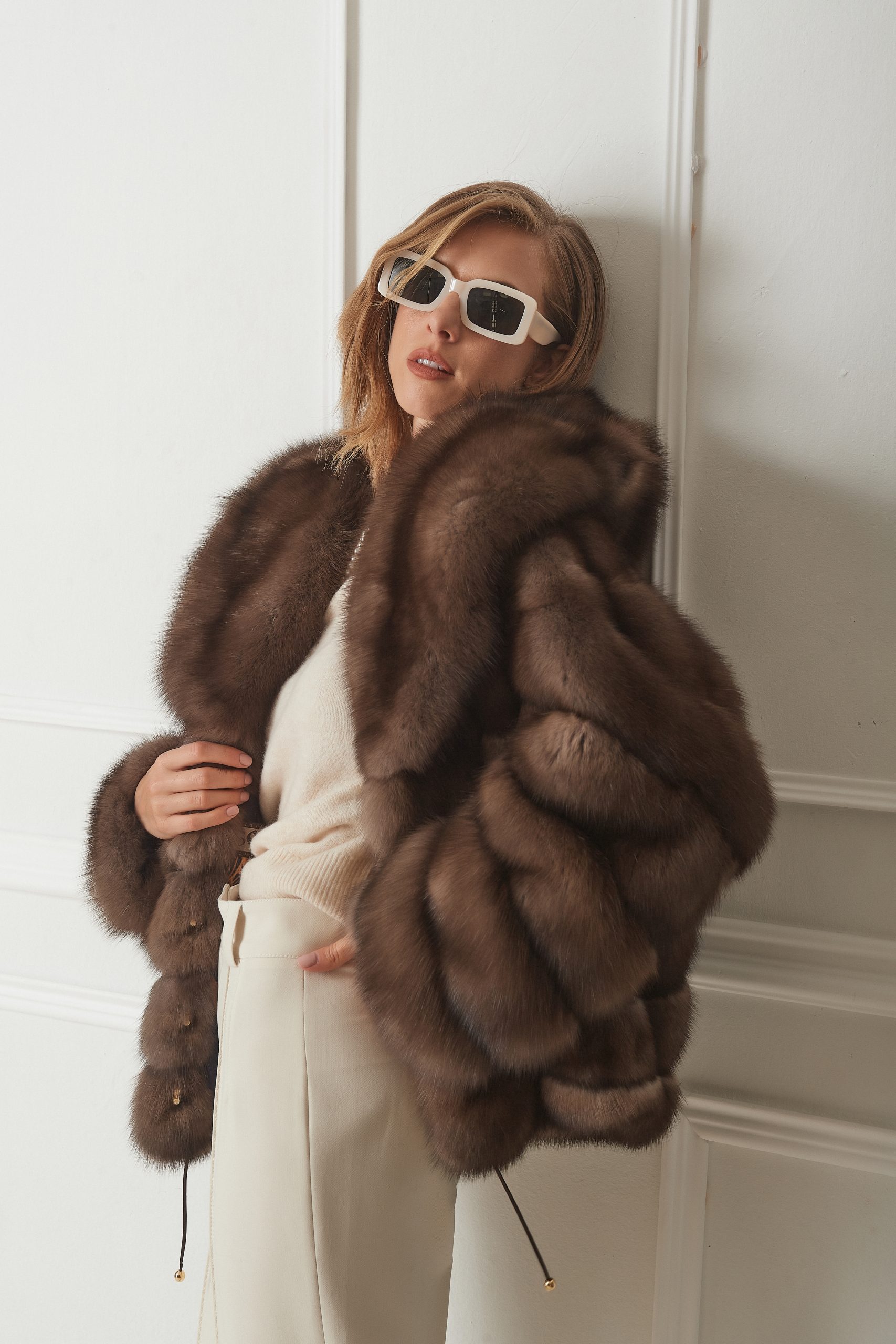
Embrace the epitome of luxury with sable fur. Feel its soft, luxurious touch and delve into the world of sable fur qualities, a testament to opulence and master craftsmanship. Every strand of sable fur weaves a story of elegance and sophistication, a narrative rich in history and allure. This is the realm of sable fur, where quality and luxury intertwine to create timeless beauty.
Our journey starts in the remote forests, the home of the elusive sable. In these quiet wilds, we begin to understand a luxury cherished by royalty and fashion experts.
We will explore where this prized fur comes from and how it turns into worldwide fashion icons. The journey from selecting the finest furs to crafting each piece is as intricate as the fur itself. These garments are more than accessories. They are treasures, passed down through generations, each with its own story.
Curious about the allure of sable fur? Join us on this journey. We’ll travel from the tranquil forests to the bustling fashion capitals, where sable fur is revered as the pinnacle of luxury and elegance.
The sable is a small, elusive creature, often a hidden jewel in the dense forests of Russia and parts of Asia. Its fur, known for its unique softness and warmth, is a marvel in the animal kingdom. But there’s more to sables than just their fur.
Sables are part of the weasel family. They are agile and swift, adapting well to their cold environment. These animals have a rich brown coat that becomes more luxurious in winter. This change helps them survive in harsh climates.
Their habitat is vast. Sables live in various forest types, from dense coniferous woods to mixed zones with trees and shrubs. Sables favor environments rich in natural cover and nearby water sources.
These animals are loners by nature, establishing and patrolling their own territories. They usually live in solitude, coming together only in the mating season. They are mainly active at night, hunting for food like small mammals and birds.
Understanding the sable’s life helps us appreciate their fur’s value. Each pelt reflects the animal’s journey through the seasons and its survival in the wild. This natural wonder turns into the luxurious garments we admire today.
Most sables today are in Russia. This country is a leading producer, with over 90,000 sable skins harvested each year. The quality of these skins is world-renowned. The Barguzin region stands out in Russia for its exceptional sables. These animals are known for their superior fur quality. Because of this, Barguzin sables are highly sought after by luxury seekers. They often specifically look for garments labeled as ‘Barguzinsky sable.’ This demand highlights the region’s reputation in the luxury fur industry.
In the world of sable fur, Russia’s role is not just domestic. In fact, more than 85% of the country’s sable fur production is exported worldwide. This significant export rate showcases the global demand for these luxurious furs. Sable garments from Russia are not only a symbol of luxury within the country but also a cherished commodity in international fashion markets. From Europe to Asia, Russian sable furs are sought after for their quality and prestige, making them a key player in the global luxury fashion industry.
Now, we understand why Barguzinsky sable fur is so prized. Its journey from a remote Russian region to high fashion showcases is a story of tradition, care, and luxury.
Sable fur distinguishes itself as a pinnacle of luxury in the fashion world. Its range of colors is one of its most striking features. The fur’s color spectrum ranges from a soft, honey-like brown to an intense, deep brown. The darker the fur, the more valuable the pelt and coat become. This color variation adds to the fur’s allure and exclusivity.
Sable fur is also known for its incredible softness. A touch of this exudes a sense of opulence, enhancing its allure. The fur is dense yet lightweight, making it ideal for high-end garments. This unique combination of density and lightness provides warmth without the bulkiness often found in other furs.
Another key quality of sable fur is its durability. Despite its delicate appearance, sable fur is surprisingly resilient. Sable fur garments resist the ravages of time, preserving their sophistication through the years. This enduring quality transforms them from mere fashion pieces to timeless treasures.
These qualities make sable fur a top choice for designers and luxury seekers. Its blend of beauty, comfort, and durability sets it apart in the fashion world.
The darkest sable fur stands out for its unique silvery qualities. When the fur turns dark brown, silver hairs start to appear. This creates a stunning effect that makes the fur look luxurious. This feature is special to dark sable fur, making it rare and beautiful.
Its silvery qualities, vary from Silvery 1 to Silvery 5. The bigger the number, the more silver hair the fur has. For example, Silvery 1 has the least silver hair, while Silvery 5 has the most. More silver hair means the fur is rarer.
As the silver hair increases, so does the rarity of the fur. And the rarer the fur, the more expensive it becomes. So, a Silvery 5 sable fur is much rarer and more expensive than a Silvery 1. This grading system helps to understand the value of each sable fur based on its unique silvery quality.